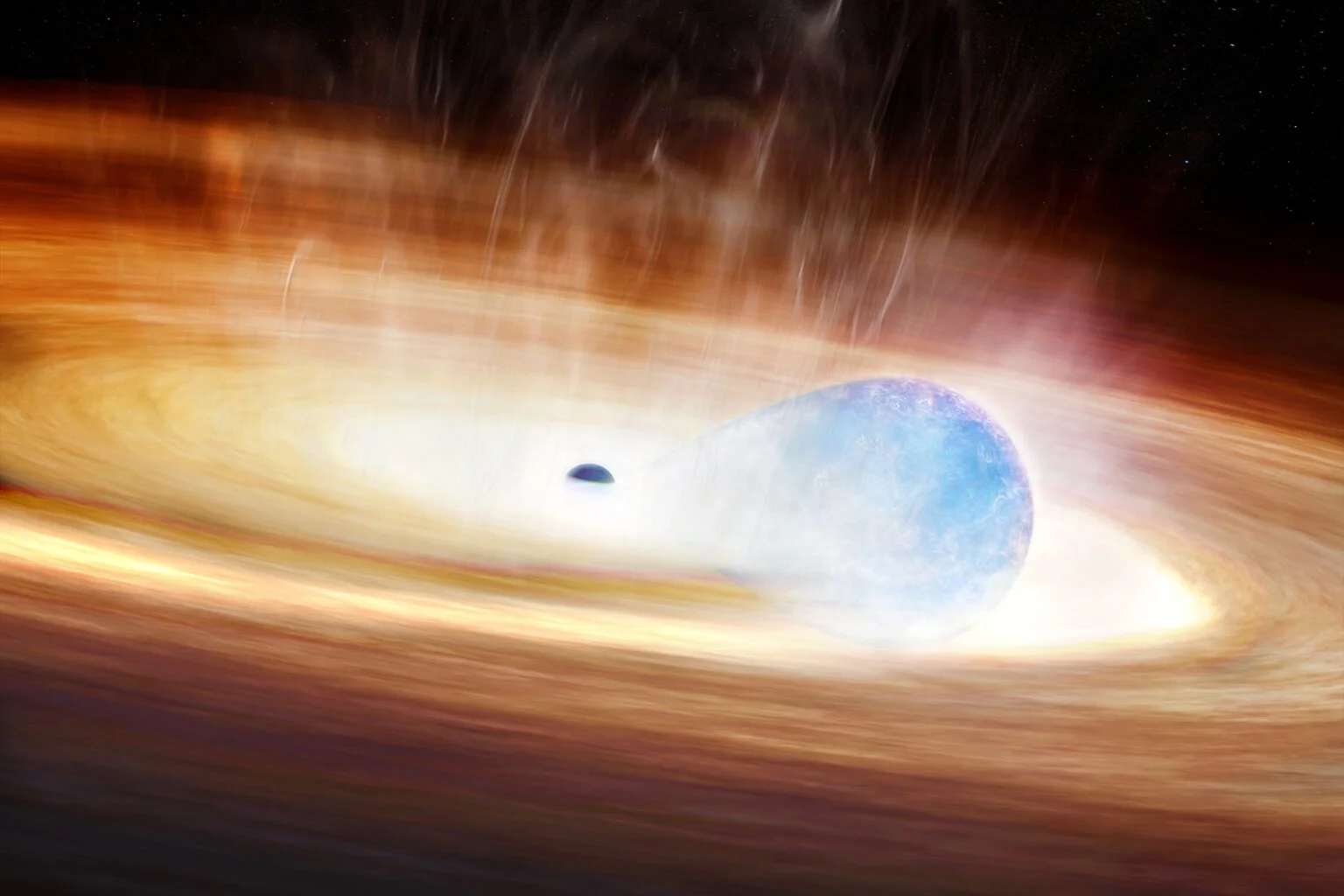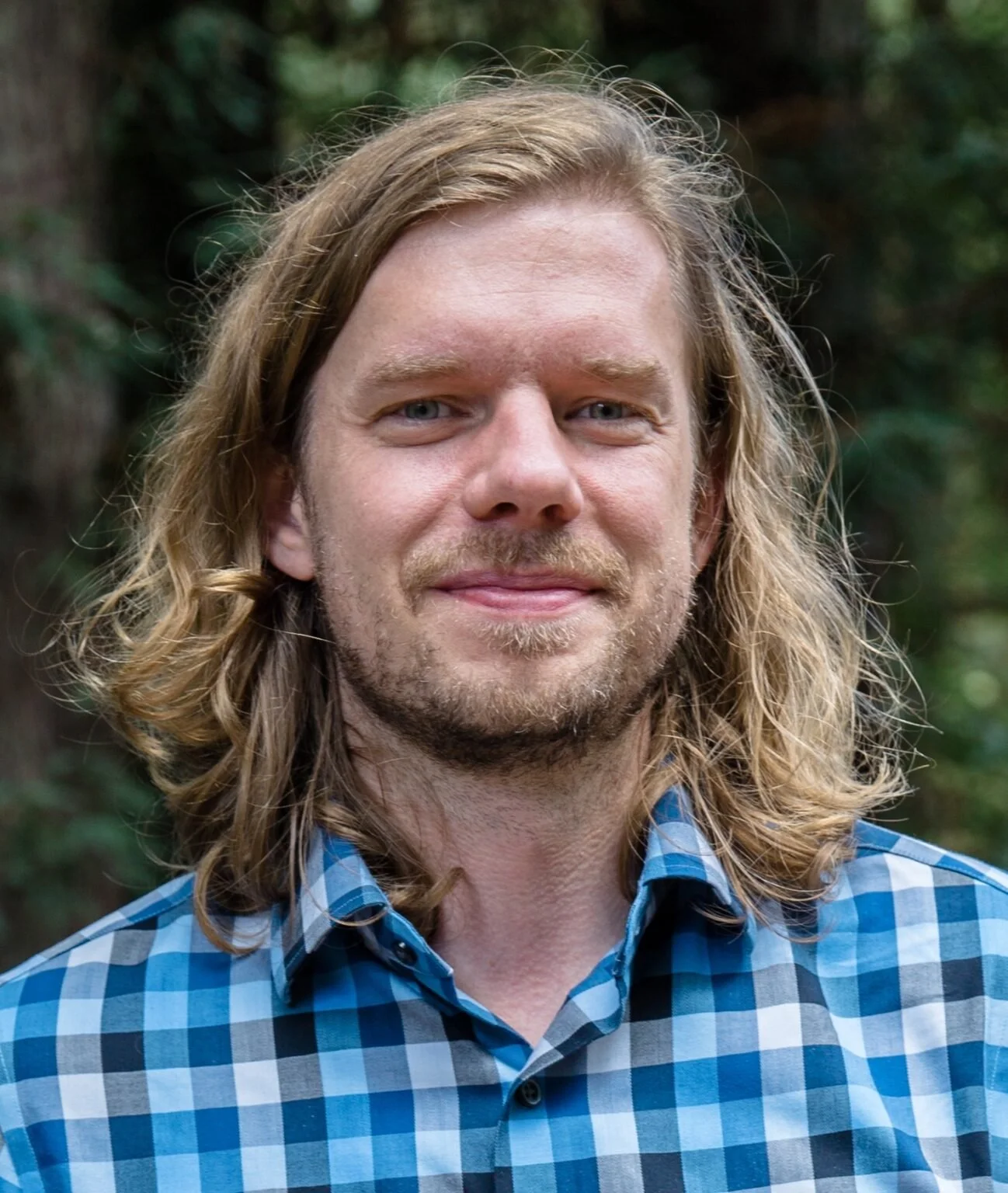UC Santa Cruz Uses AI to Spot Explosive Stellar Death by Black Hole
Artistic depiction of the explosive interaction between the black hole and the massive nearby star (blue). As the separation between the star and the black hole decreased, the black hole's intense gravity pulled gas and dust off of the star into a disk. Before the star was able to swallow the black hole, gravitational stress from the black hole triggered the star's explosion. Collisions between the stellar explosion and shells of material from earlier interactions located above and below the disk, powered a dramatic re-brightening event. (Credit: Melissa Weiss/CfA)
Astronomers at UC Santa Cruz have identified a rare supernova, named SN 2023zkd, resulting from a massive star's explosion in close proximity to a black hole. This discovery was made possible by an artificial intelligence algorithm developed by a team led by Ryan Foley, an associate professor of astronomy at the University of California, Santa Cruz, which scans for unusual cosmic events in real time.
Key Findings
Ryan Foley
Initial Discovery: SN 2023zkd was first detected in July 2023, allowing for immediate follow-up observations by various telescopes, including those at the Haleakalā Observatory in Hawaiʻi.
Unique Characteristics: This supernova is unprecedented, with Ryan Foley, an associate professor of astronomy, noting that the AI can identify anomalies faster than human observers, which is crucial for time-sensitive studies.
Theoretical Interpretations: The leading theory suggests that the star's orbit decayed due to gravitational interactions with the black hole, ultimately triggering the explosion. An alternative theory posits that the black hole may have torn the star apart before it could explode.
Unusual Behavior
Located approximately 730 million light-years from Earth, SN 2023zkd initially appeared as a typical supernova but exhibited unexpected behavior by brightening again months after the initial explosion. This pre-explosion activity, observed over four years, is rarely seen in supernovae and indicates the star was under significant gravitational stress.
Collaborative Efforts
The research involved a diverse team, including Alexander Gagliano, a fellow at the NSF Institute for Artificial Intelligence and Fundamental Interactions, and Enrico Ramirez-Ruiz, a professor of astronomy and astrophysics, along with V. Ashley Villar, an assistant professor of astronomy at Harvard. The project was supported by various funding bodies such as the National Science Foundation, NASA, the Moore Foundation, and the Packard Foundation. However, Foley expressed concerns about the uncertain funding landscape, which could limit future research opportunities and student admissions in their program.
Broader Implications
Foley highlighted the potential applications of their AI techniques beyond astronomy, suggesting they could be used in fields like healthcare, security, and finance for real-time anomaly detection. This innovative approach represents a significant advancement in astrophysics and may pave the way for future discoveries.
Learn more: https://news.ucsc.edu/2025/08/black-hole-supernova/



